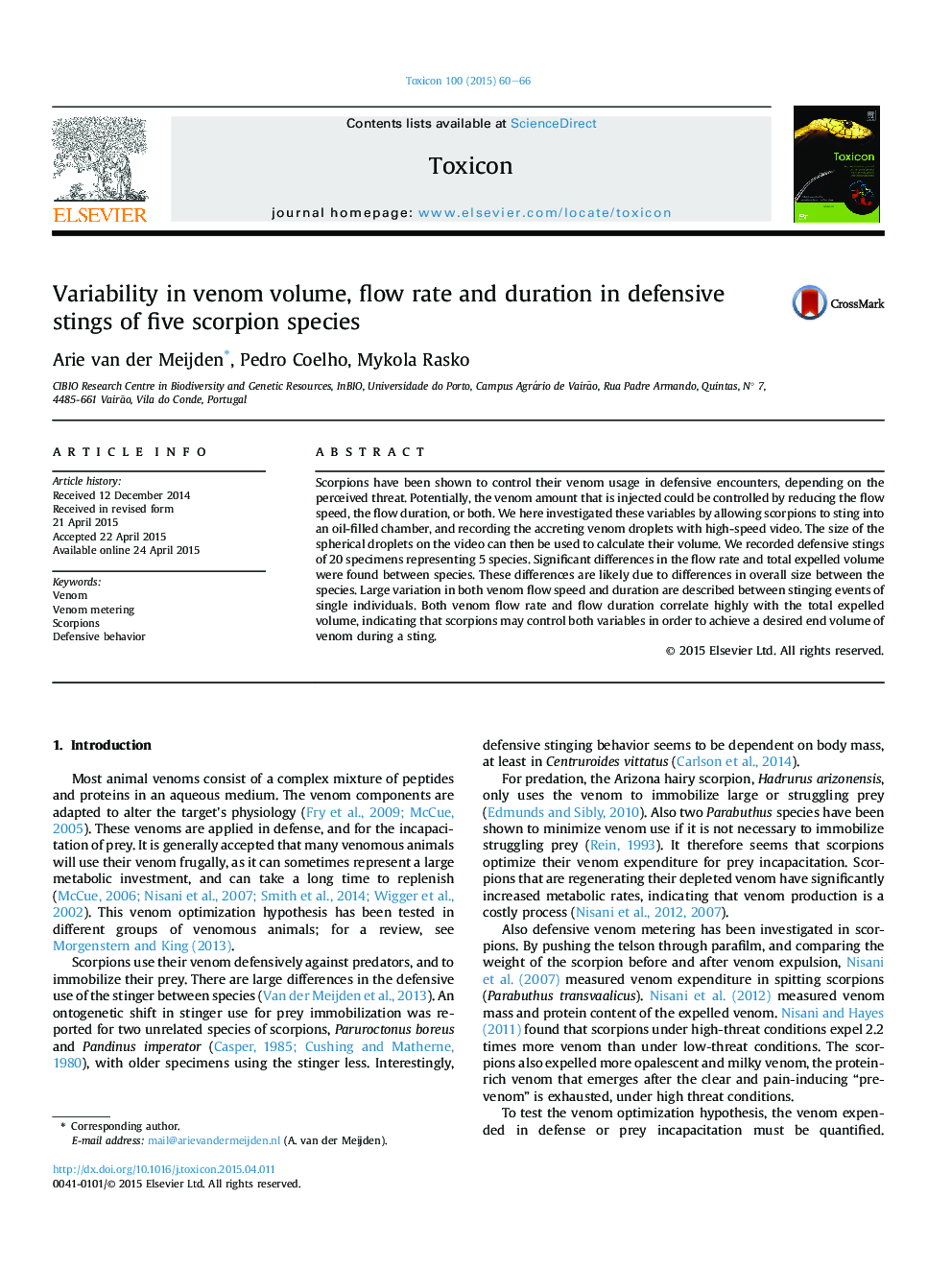| Article ID | Journal | Published Year | Pages | File Type |
|---|---|---|---|---|
| 2064324 | Toxicon | 2015 | 7 Pages |
•A new method of measuring venom expulsion rates using high speed video is shown.•Venom flow varies highly in flow rate and duration between stings.•Differences are found between species in total expelled venom and flow rate.•Species differences are likely due to size differences.•Flow rate and duration contribute similarly to the total amount of expelled venom.
Scorpions have been shown to control their venom usage in defensive encounters, depending on the perceived threat. Potentially, the venom amount that is injected could be controlled by reducing the flow speed, the flow duration, or both. We here investigated these variables by allowing scorpions to sting into an oil-filled chamber, and recording the accreting venom droplets with high-speed video. The size of the spherical droplets on the video can then be used to calculate their volume. We recorded defensive stings of 20 specimens representing 5 species. Significant differences in the flow rate and total expelled volume were found between species. These differences are likely due to differences in overall size between the species. Large variation in both venom flow speed and duration are described between stinging events of single individuals. Both venom flow rate and flow duration correlate highly with the total expelled volume, indicating that scorpions may control both variables in order to achieve a desired end volume of venom during a sting.
Graphical abstractFigure optionsDownload full-size imageDownload as PowerPoint slide
